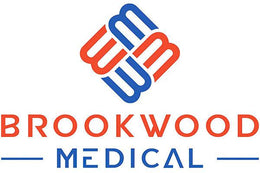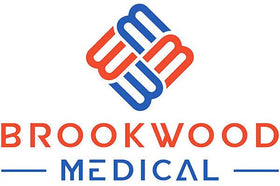The Evolution of Face Masks: From Essentials to Everyday Accessories

The world of face masks has undergone a significant transformation over the past few years. Once primarily thought of as a necessity in surgical settings, face masks have quickly evolved into versatile accessories that cater to various aspects of our daily lives. As we delve into the journey of face masks, we will explore their origins, the rise of the Surgical Face Mask, and their current role in fashion and everyday use.
The Historical Context of Face Masks
To understand the evolution of face masks, we must look back at their historical use. Face masks have been around for centuries, originally adopted by healthcare professionals to protect themselves from infectious diseases. The first instances of face masks can be traced back to the 1910s during the Spanish Flu pandemic, where certain masks were utilized to mitigate the spread of airborne viruses.
The Rise of the Surgical Face Mask
Fast forward to the early 20th century, when the modern-day Surgical Face Mask was developed. This innovation revolutionized the way medical professionals operated, serving as an essential barrier between them and potential pathogens. These masks are designed to filter out bacteria and viruses, making them critical in surgical procedures, thus ensuring the safety of both the patient and the healthcare provider.
The Surge in Popularity Amid Global Health Crises
The global health crises, particularly the COVID-19 pandemic, escalated the public’s awareness and use of face masks. Suddenly, the Surgical Face Mask became a symbol of safety, protection, and responsibility. With the barrage of information and recommendations from health authorities, people around the world began to wear masks when venturing outdoors, leading to an unprecedented demand for various types of face coverings.
Surgical Face Mask vs. Cloth Masks
As the need for face masks grew, so did the variety available in the market. While the Surgical Face Mask remained the gold standard for medical environments, the cloth mask emerged as a popular alternative for general public use. The distinction between the two primarily lies in their material, construction, and purpose:
- Surgical Face Masks: Designed for medical settings, these masks offer filtration advantages and are disposable.
- Cloth Masks: Made from various fabrics, these are often washable and reusable, primarily serving to reduce the spread of respiratory droplets.
This evolution highlighted how face masks could serve dual purposes: safeguarding health and providing a personal statement of style.
Fashion Meets Functionality
With the popularity of face masks soaring, many designers and brands began crafting stylish options to meet consumer demand. The need for privacy in personal expression resulted in a diverse range of face masks, made from vibrant fabrics and unique designs. The Surgical Face Mask gradually faced competition not just as a health necessity but also as an essential fashion accessory.
The Trend of Customized Masks
Customization quickly became a significant trend in the face mask market. People began to seek masks that not only served a protective purpose but also allowed them to express individuality. From masks that carried catchy phrases to ones adorned with artwork, customization played a pivotal role in solidifying the mask's status in contemporary culture. An impressive variation of styles emerged, including:
- Designer Masks: High-end brands introduced exclusive collections of luxury masks.
- Personalized Masks: Many sellers started offering personalized options for events or family gatherings.
- Kids’ Masks: With the school-age population needing protection, colorful and character-themed masks catered to younger audiences.
This unprecedented blend of functionality and fashion ensured that face masks were not merely seen as one-time essentials, but rather as integral components of our wardrobes.
The Impact of Social Media on Mask Culture
As face masks transitioned into fashion statements, social media played a critical role in popularizing this new accessory. Influencers and celebrities began showcasing stylish masks, driving engagement and interest in creative designs. Platforms like Instagram and TikTok transformed the simple act of wearing a mask into a powerful trend. The presence of face masks in the digital world played a significant role in their acceptance and normalization.
Mask Challenges and Trends
Social media gave rise to various mask challenges and content revolving around creative mask-wearing. Videos demonstrating how to style masks with outfits or tips for making DIY masks gained traction, creating an entire subculture around face coverings. This surge in visibility allowed brands to connect with consumers uniquely, pushing the narrative that masks can be a fun addition to any attire.
Health Consciousness and the Future of Face Masks
The pandemic fostered a newfound appreciation for hygiene and safety, leading many individuals to become more health-conscious. Even as restrictions ease, the use of face masks continues to be prevalent, especially in crowded or enclosed spaces. Consumers are now more educated about the importance of protective gear, and the Surgical Face Mask remains an integral part of healthcare, while cloth and stylish masks are likely here to stay for everyday wear.
Innovative Technologies and Materials
With the evolution of face masks, innovative technologies and materials have also emerged. Manufacturers are exploring advanced materials designed to offer more than just filtration. Some cutting-edge options include:
- Antimicrobial Fabrics: These are made to resist bacteria growth, enhancing safety.
- Breathable Materials: Innovations in textile technology create masks that breathe better, providing comfort during extended wear.
- Smart Masks: Some designs incorporate sensors that can monitor air quality or humidity levels, representing the future of health accessories.
The commitment to research and development in mask technology indicates that the evolution of face masks is far from over.
Long-Term Wear: Etiquette and Best Practices
As we embrace the new norm of mask-wearing, understanding etiquette and best practices is crucial. Knowing when and how to wear a mask not only contributes to personal protection but also fosters a sense of community responsibility. Here are some guidelines to consider:
- Always Wear a Mask in Crowded Areas: Even outside, when social distancing isn’t possible, wearing a mask can keep everyone safe.
- Choose the Right Type of Mask: Depending on the setting, opt for a Surgical Face Mask for medical environments or a cloth mask for general outings.
- Prioritize Cleanliness: Always wash reusable masks regularly and dispose of Surgical Face Masks properly.
Proper etiquette elevates the collective awareness surrounding health and safety while wearing masks.
The Lasting Impression of Masks
The journey of face masks from essential health tools to chic everyday accessories reflects profound societal changes. They have become symbols of resilience, the human spirit’s ability to adapt, and the creativity that emerges, even in challenging times.
As the world continues to navigate the path ahead, it is clear that the evolution of face masks will not simply revert to pre-pandemic notions. Instead, face masks are poised to remain a fixture in both fashion and healthcare. Their role transcends functional barriers, representing a thoughtful intersection between health safety and self-expression.
Instead of viewing masks solely as protective gear, we can embrace them as an integral aspect of modern life, acknowledging that style and safety can undeniably coexist. With this understanding, we look forward to a future where face masks remain a vibrant part of our identity, fashion statement, and commitment to communal health.






